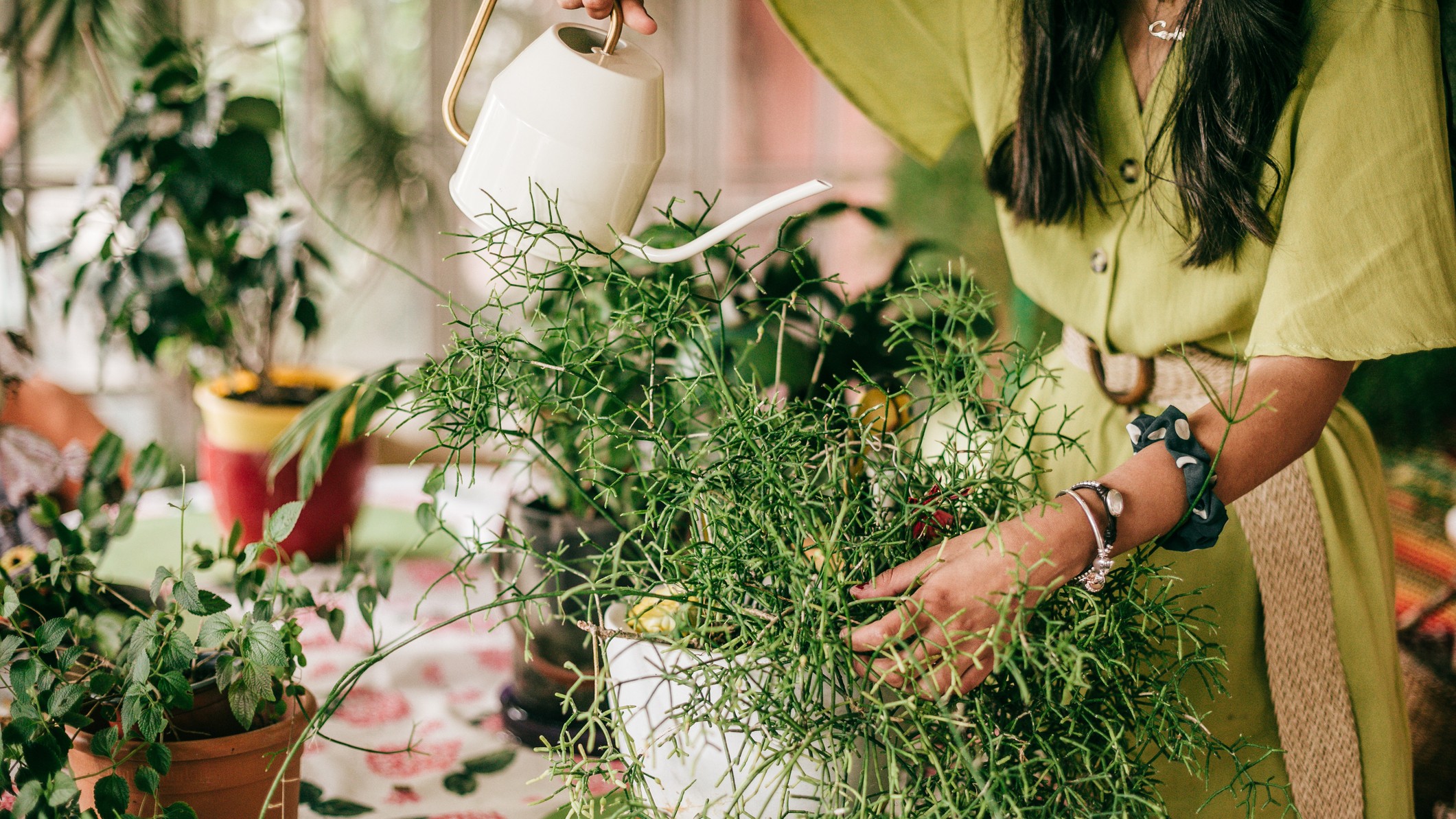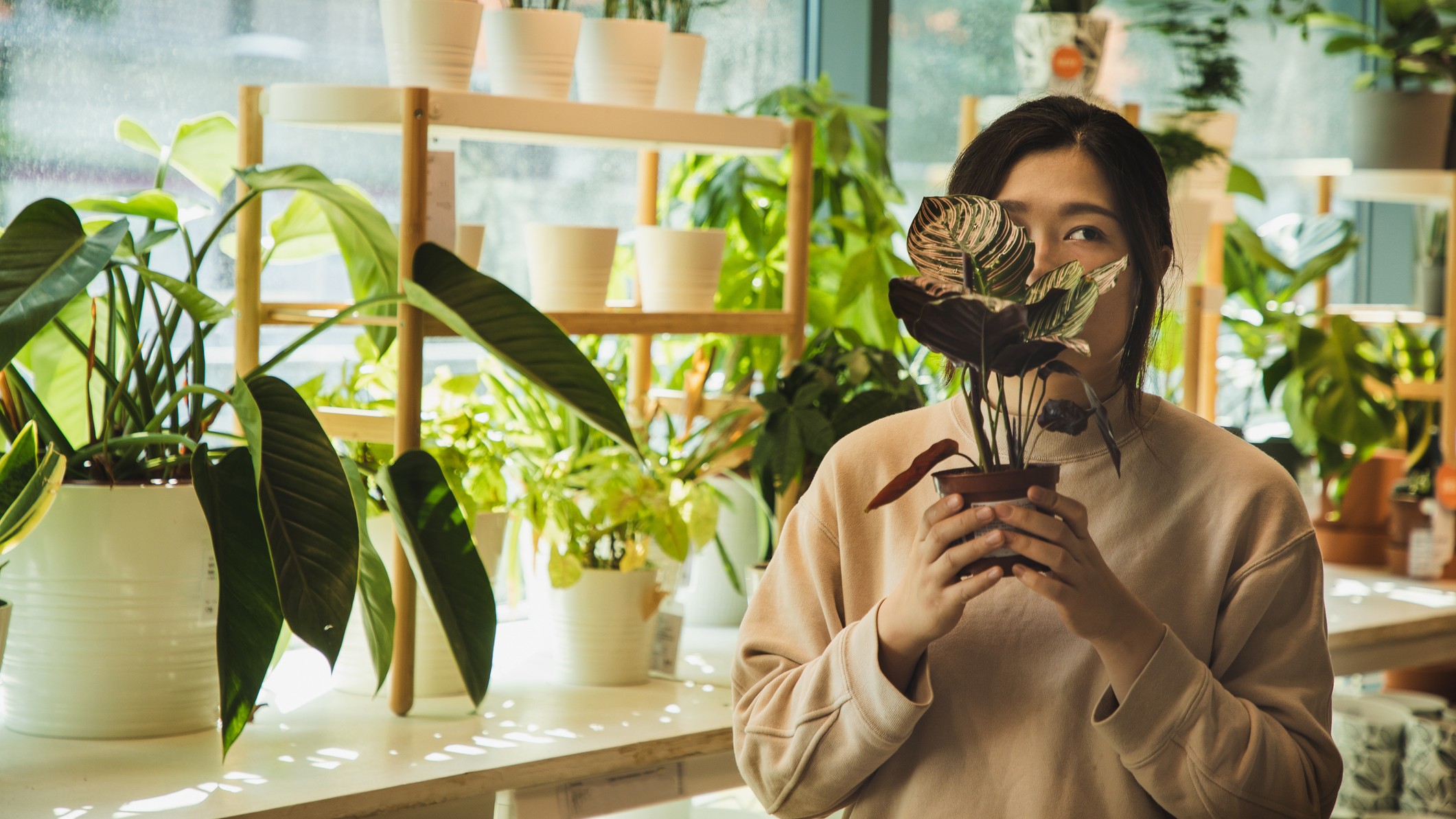How to care for houseplants
From watering schedules to the perfect environment, here’s how to care for houseplants so they thrive

Knowing how to care for houseplants so that they stay happy and healthy can feel like a complex topic. You’ll find that investing in one of the best humidifiers can be helpful in keeping the humidity level in the room just right for your plants, but there’s also underwatering, overwatering, and sun exposure to consider too.
To make things even more complicated, each plant has a different set of needs that must be met in order for it to do well. The good news is that even though all of these factors play a role in whether your plant will wither or thrive, we’re here to help you understand the basics of houseplant care and how to create a happy environment for your plants to live in.
In this article, we’ll walk you through the basics of caring for your houseplants, including how to design a watering schedule and some simple ways you can create the perfect conditions for your houseplants to flourish and live long into the future.
The basics of caring for houseplants
In simple terms, house plants need water and sunlight. But getting the amounts for both of those elements right is where things can get tricky. All houseplants have different needs, so we’re going to separate them into three broad categories: foliage plants, palms, and succulents.
It’s worth bearing in mind though that each plant within these categories will have its own needs, so checking the care advice your plant comes with when you buy it is a great place to start. You can also search online for the needs of your specific plant so you can be sure to get on the right track from the outset.
Lighting needs
Generally, when it comes to lighting indoor house plants, foliage plants will do better in indirect sunlight as opposed to direct sunlight. However, they do not thrive in areas with little or no light.
You can tell your houseplant isn’t in the right spot to get the amount of light it wants if its leaves start to turn pale or if they start to wilt. Indeed, too little light will cause your plant to stop producing enough chlorophyll to keep its leaves green, while too much light will dehydrate it.
Get the world’s most fascinating discoveries delivered straight to your inbox.
Indoor palms do well in bright, indirect sunlight. So try finding a spot for them in the brightest room in your house, but away from a window or any other heat source. You should avoid putting your palm (or any other house plant) too close to radiators or other heat sources to prevent their leaves from getting scorched.
If you’re considering where to place succulents, you will want to find a light spot. Succulents can be really hardy and often come from very hot, dry environments originally. Newly planted succulents tend to be more vulnerable to bright light, but older plants may do fine in direct sunlight.
Watering needs
Foliage house plants and succulents should generally be watered once a week. As a rule of thumb, you should be giving your plants water equivalent to ¼ of the volume of their pot to keep them hydrated until you water them next.
Indoor palms, on the other hand, need different houseplant care and frequent watering is top of the list. When you first buy or repot a palm, you will want to water it once a day for around a week. Then, you will drop that frequency to twice a week. Depending on how warm and humid your home is, your house palm may need to be watered more or less frequently.
Keep an eye on how your palm’s leaves are looking to gauge if it’s getting the right amount of water: if it’s dropping leaves or has yellowing leaves, it may be getting too much water, if its leaves are browning or it stops growing then you might not be giving it enough water.

Other needs
When it comes to which plants need humidity, you’ll find that most house plants thrive in a mild and humid environment. Remember, many of these plants originally grew in jungle or rainforest settings, so recreating a similar environment will help them thrive. Getting your humidity levels right will help your plants stay hydrated and healthy.
In an article published by the University of Reading, researchers found that for most indoor foliage plants, a humidity level of 40% to 60% will be ideal. In most home settings, you will likely find that you will need a humidifier to reach those levels of humidity consistently throughout the year.
To keep track of those levels, you can get a hygrometer. If you decide to use a humidifier, you will need to ensure that you know how to clean your humidifier to avoid spreading bacteria that could harm both you and your plants. Most humidifiers can be cleaned using dish soap and warm water.
Watering your houseplants
The best way to keep on track with watering your houseplants is to develop a watering schedule that works for your lifestyle. Now, your houseplants’ needs will likely not be the same year-round because things like the temperature and light levels will be different in summer compared to winter, and each plant's needs will be slightly different. But having a weekly plan for checking in on your plants is an excellent place to start.
Depending on the plants in your collection, you will need to set a watering day once a week or more often if you have palms to water. On those days, you should check on each of your plants to see if their soil is dry or not and if they look like they need to be watered more. To check your soil, place a clean finger in the pot. If the earth sticks to your finger, it is likely wet enough to be left for a few more days.
Before watering, you should also check your plants for signs of overwatering: as we mentioned above, falling leaves, yellowing leaves, and pale leaves can all indicate they are being watered too often. If that’s the case, skip this week’s water for the affected plant or plants.
The perfect conditions for houseplants to thrive
Plants need water and sunlight to stay alive, but they need a few other things to thrive. Try keeping your house warm; avoid letting temperatures fall below 55F. Maintaining high humidity levels will help keep your plants hydrated and healthy. Placing a humidifier near your houseplants will help create the perfect environment for plants to grow and thrive.
If your plants are well looked after, they will grow and eventually need repotting. If a previously healthy plant starts to look unhappy, it might be time to move it to a bigger pot. After repotting, you will likely want to water your plant more frequently for the first week to help it settle into its new environment.
If your plants are getting too big for the space you have, consider taking cuttings from them and growing new, smaller plants. These are ideal for adding to your collection, or you can even put them in small pots and gift them to friends and family.
India Bottomley is a health and beauty writer whose work has been published in the likes of Cosmopolitan, Forbes, and Dazed Magazine. A lifelong skincare aficionado, India has been writing research-led pieces on trending skincare, makeup, and cosmetic procedures since 2016. She takes particular interest in the growing connection between tech and beauty, and has had pieces on the topic published in American Healthcare Journal. When not writing she can be found exploring national parks or at the beach chasing sunsets.



